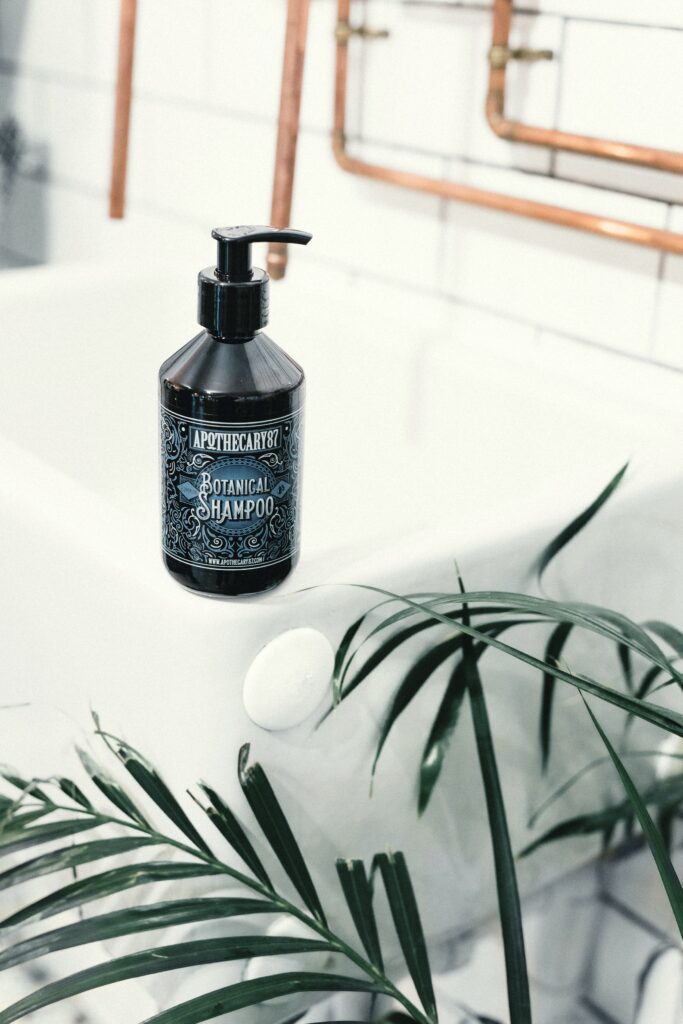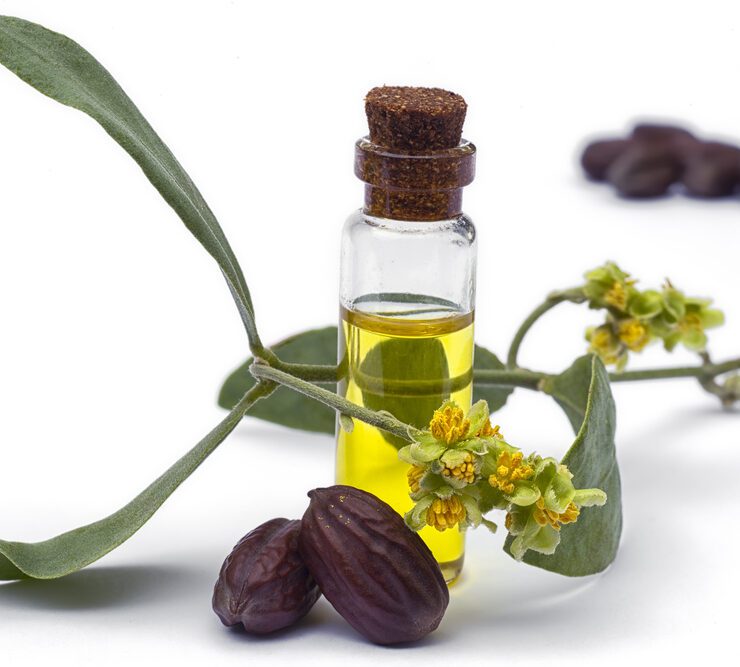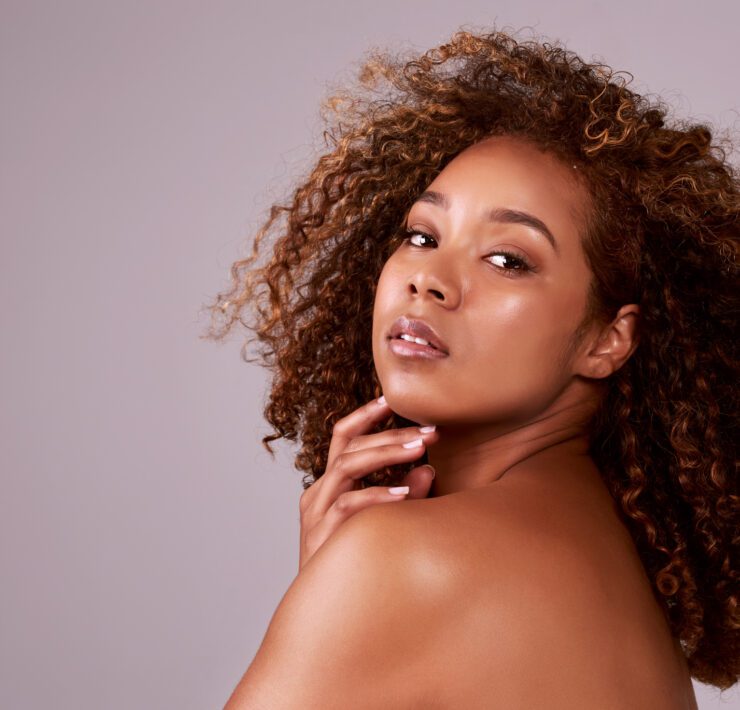
Did you know that at least 1 in 5 people suffer from a skin allergy at least once? For those with sensitive skin, allergic reactions to hair care products may be a concern. Remember that the scalp is also skin. We can develop an allergic reaction to a hair product similar to how the face can get a rash from a face cream. The Top 3 sources for scalp-only allergens are hair dyes, shampoo/conditioners, and consumer items (e.g., hair appliances, glasses).
The first sign of an allergic reaction is typically a red, itchy, and/or scaly rash on the skin touched by the allergen. In severe cases, the skin can even develop small bumps and blisters. The rash can appear on the scalp, the face, on and behind the ears, around the armpits, and the neck.
For some people, allergic contact dermatitis (ACD) caused by ingredients in hair products, such as shampoos, conditioners, or leave-ins is an unfortunate reality.
Do I Have a Scalp Allergy?
Symptoms indicative of a scalp allergy:
- Scalp sensitivity
- Persistent itch
- Rashes on the scalp
- Little bumps on the scalp, forehead, neck, and behind the ears
- Scaly skin
- Flaking skin
- Anti-dandruff treatment is not working (because it is an allergy)
Which Ingredients Can Cause An Allergic reaction?
These common ingredients in hair products are often the culprit. Luckily, they do not cause allergic reactions in everyone. In fact, for the majority of people, these ingredients are tolerable and do not cause allergic reactions at all. However, if you have one or more of the symptoms mentioned above, take a look at your hair products. Do they contain one or more of the following? Listed in order of prevalence:

- Fragrances
It is difficult to identify the fragrances that may cause issues because companies keep these a trade secret. If you suspect you are having an allergic reaction, try using fragrance-free products until you figure out the culprit.
Some brands, like Jessie Curl and Curlsmith offer fragrance-free options.
Vanicream has a fragrance-free and allergen-free line. For example:
Vanicream Free & Clear Shampoo
Ingredients: purified water, lauryl glucoside, coco glucoside, acrylates copolymer, disodium cocoyl glutamate, sodium cocoyl glycinate, glycerin, sucrose cocoate, panthenol, pentylene glycol, 1,2-hexanediol, sodium cocoyl glutamate, disodium EDTA, caprylyl glycol, sodium hydroxide, sodium chloride
Vanicream Free & Clear Conditioner
Ingredients: purified water, cetearyl alcohol, hydrogenated polydecene, 1,3 propanediol, distearoylethyl dimonium chloride, glycerin, ceteareth-20, panthenol, 1,2 hexanediol, arginine, caprylyl glycol
- Hair bleach – the treatment itself can be irritating to the scalp but the irritation usually subsides within a few days

- Isothiazolinones (preservatives)
- Methylchloroisothiazolinone (MCI), also known as an itchy M
- Methylisothiazolinone (MI), the other itchy M
- 5-chloro-2-methyl-4-isothiazolin-3-one
- Kathon
- 5-chloro-2-methyl-2H-isothiazol-3-one
- 2-methyl-2H-isothiazol-3-one
- 2-methyl-4-isothiazolin-3-one
- 2-methyl-3(2H)-isothiazol-3-one
- benzisothiazolinone (BIT) (uncommon in hair products)
- octylisothiazolinone (OIT) (uncommon in hair products)
These preservatives are used in ultra-low concentrations: in the United States, the maximum approved concentrations are 15 parts per million (ppm) for rinse-off products and 8 ppm for cosmetics. Thus, allergic reactions to MCI/MI at these concentrations should be rare. However, allergies to isothiazolinones appear to be on the rise. Avoid products containing these ingredients if you are allergic to isothiazolinones. At 100 ppm, about 2% of users will have positive reactions.
- Formaldehyde-releasing preservatives, are the next most common allergens:
These preservatives inhibit the growth of microorganisms in cosmetics by slowly releasing formaldehyde over time. The slow-release over time allows the concentration of free formaldehyde in the products to remain low. Still, about 1-3% of users will have positive reactions.
- dimethylol dimethyl (DMDM) hydantoin
- diazolidinyl urea
- quaternium-15 (positive reaction in about 9% of users)
- imidazolidinylurea
- Parabens
- Propylene glycol, a water-soluble emulsifying agent
Propylene glycol is a strong irritant and about 1-4% of users will have a positive reaction to it.
- Vitamin E (tocopherol)
Tocopherol can occasionally cause allergic dermatitis. About 1.1% of users patch-tested with dl-α-tocopherol experienced positive reactions. Tocopherol lineolate appears to be an especially potent irritant.
- Benzophenones – ultraviolet light absorbers that protect against UV light
- Iodopropynyl butyl carbamate (IPBC) – a non-formaldehyde preservative
- Methyldibromoglutaronitrile/phenoxyethanol combination is a significant source of allergic dermatitis
- P-phenylenediamine – common in hair dyes
- Balsam of Peru – a common cause of allergic contact dermatitis; it smells like vanilla and cinnamon and contains a combination of cinnamic acid, cinnamyl cinnamate, benzyl benzoate, benzoic acid and vanillin
- Cinnamic aldehyde – the compound that gives cinnamon its flavor and odor; often found in fragrances
Sources We Found Useful:
Contact Dermatitis: A Practice Parameter–Update 2015, Fonacier, Luz et al.
The Journal of Allergy and Clinical Immunology: In Practice, Volume 3, Issue 3, S1 – S39






